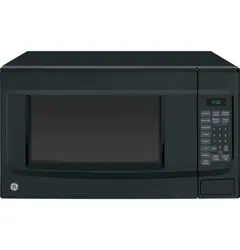Documents: Go to download!
User Manual
- User Manual - (English, Spanish)
- Quick Specs - (English)
- Operating Instructions
- Care and cleaning
- TROUBLESHOOTING
Table of contents
Owner's Guide Microwaves
Operating Instructions
About the features of your microwave oven.
Throughout this manual, features and appearance may vary from your model.
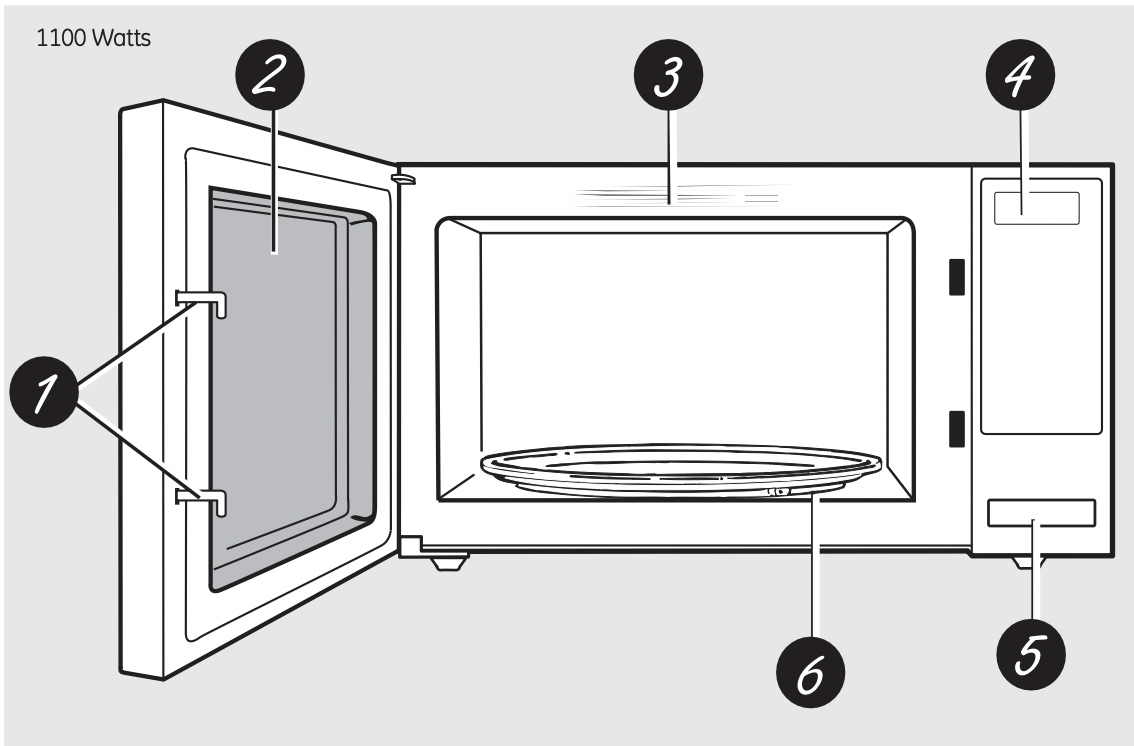
Features of the Oven
- Door Latches.
- Window with Metal Shield. Screen allows cooking to be viewed while keeping microwaves confined in the oven.
- Convenience Guide.
- Touch Control Panel and Display.
- Door Latch Release. Press latch release to open door.
- Removable Turntable. Turntable and support must be in place when using the oven. The turntable may be removed for cleaning.
NOTE: Rating plate, oven vent(s) and oven light are located on the inside walls of the microwave oven.
You can microwave by time, with the sensor features or with the auto feature.
Not all features on all models.
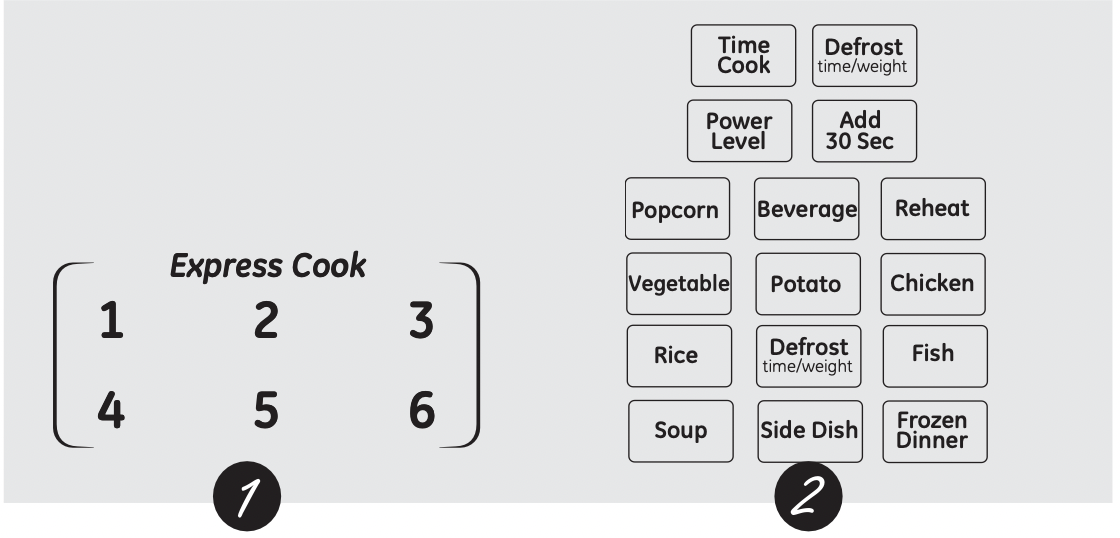
Cooking Controls
Check the Convenience Guide before you begin.
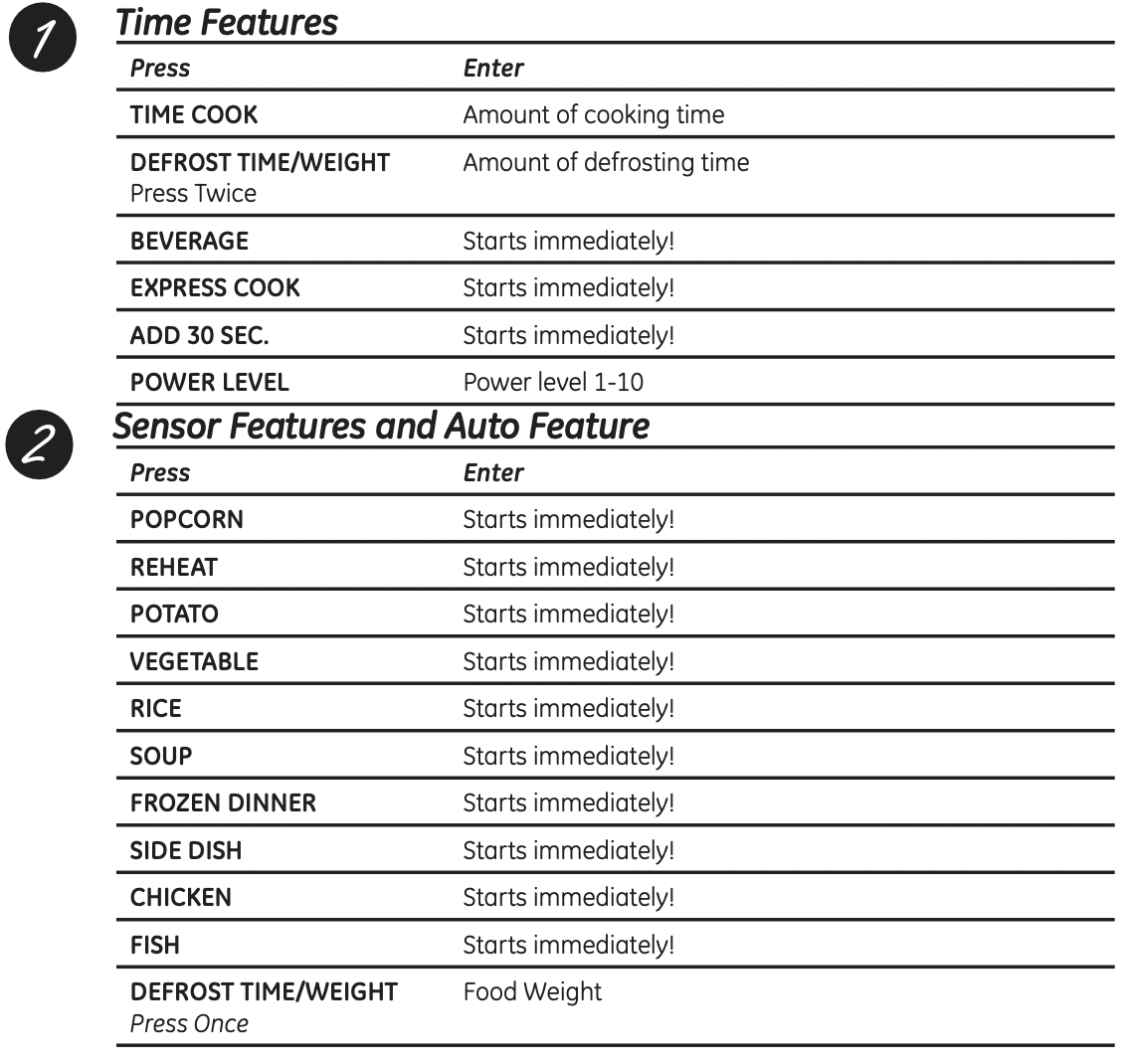
About changing the power level.
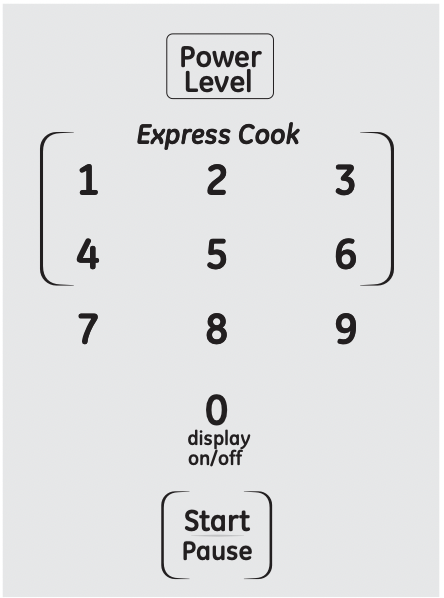
The power level may be entered or changed immediately after entering the feature time for TIME COOK. The power level may NOT be changed during time countdown.
- Press TIME COOK.
- Enter cooking time.
- Press POWER LEVEL.
- Select desired power level 1–10.
- Press START/PAUSE.
Variable power levels add flexibility to microwave cooking. The power levels on the microwave oven can be compared to the surface units on a range. Each power level gives you microwave energy a certain percentage of the time. Power level 7 is microwave energy 70% of the time. Power level 3 is energy 30% of the time. Most cooking will be done on High (power level 10) which gives you 100% power. Power level 10 will cook faster but food may need more frequent stirring, rotating or turning over. A lower setting will cook more evenly and need less stirring or rotating of the food. Some foods may have better flavor, texture or appearance if one of the lower settings is used. Use a lower power level when cooking foods that have a tendency to boil over, such as scalloped potatoes.
Rest periods (when the microwave energy cycles off) give time for the food to “equalize” or transfer heat to the inside of the food. An example of this is shown with power level 3 - the defrost cycle. If microwave energy did not cycle off, the outside of the food would cook before the inside was defrosted.
Here are some examples of uses for various power levels:
High 10: Fish, bacon, vegetables, boiling liquids.
Med-High 7: Gentle cooking of meat and poultry; baking casseroles and reheating.
Medium 5: Slow cooking and tenderizing for stews and less tender cuts of meat.
Low 2 or 3: Defrosting; simmering; delicate sauces.
Warm 1: Keeping food warm; softening butter.
About the time features.
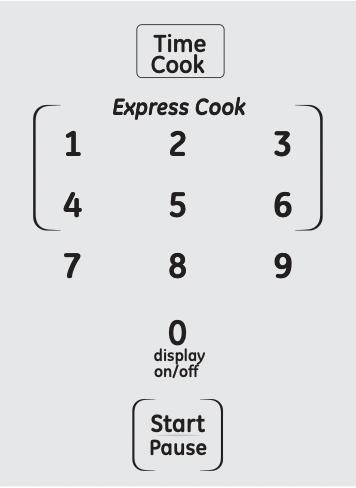
Time Cook
Time Cook I
Allows you to microwave for any time up to 99 minutes and 99 seconds.
Power level 10 (High) is automatically set, but you may change it for more flexibility.
- Press TIME COOK.
- Enter cooking time.
- Change power level if you don't want full power. (Press POWER LEVEL. Select a desired power level 1–10.)
- Press START/PAUSE.
You may open the door during Time Cook to check the food. Close the door and press START/PAUSE to resume cooking.
Time Cook II
Lets you change power levels automatically during cooking. Here's how to do it.
- Press TIME COOK.
- Enter the first cook time.
- Change power level if you don't want full power. (Press POWER LEVEL. Select a desired power level 1–10.)
- Press TIME COOK again.
- Enter the second cook time.
- Change power level if you don't want full power. (Press POWER LEVEL. Select a desired power level 1–10.)
- Press START/PAUSE.
At the end of Time Cook I, Time Cook II counts down.
Cooking Guide for Time Cook
NOTE: Use power level High (10) unless otherwise noted.
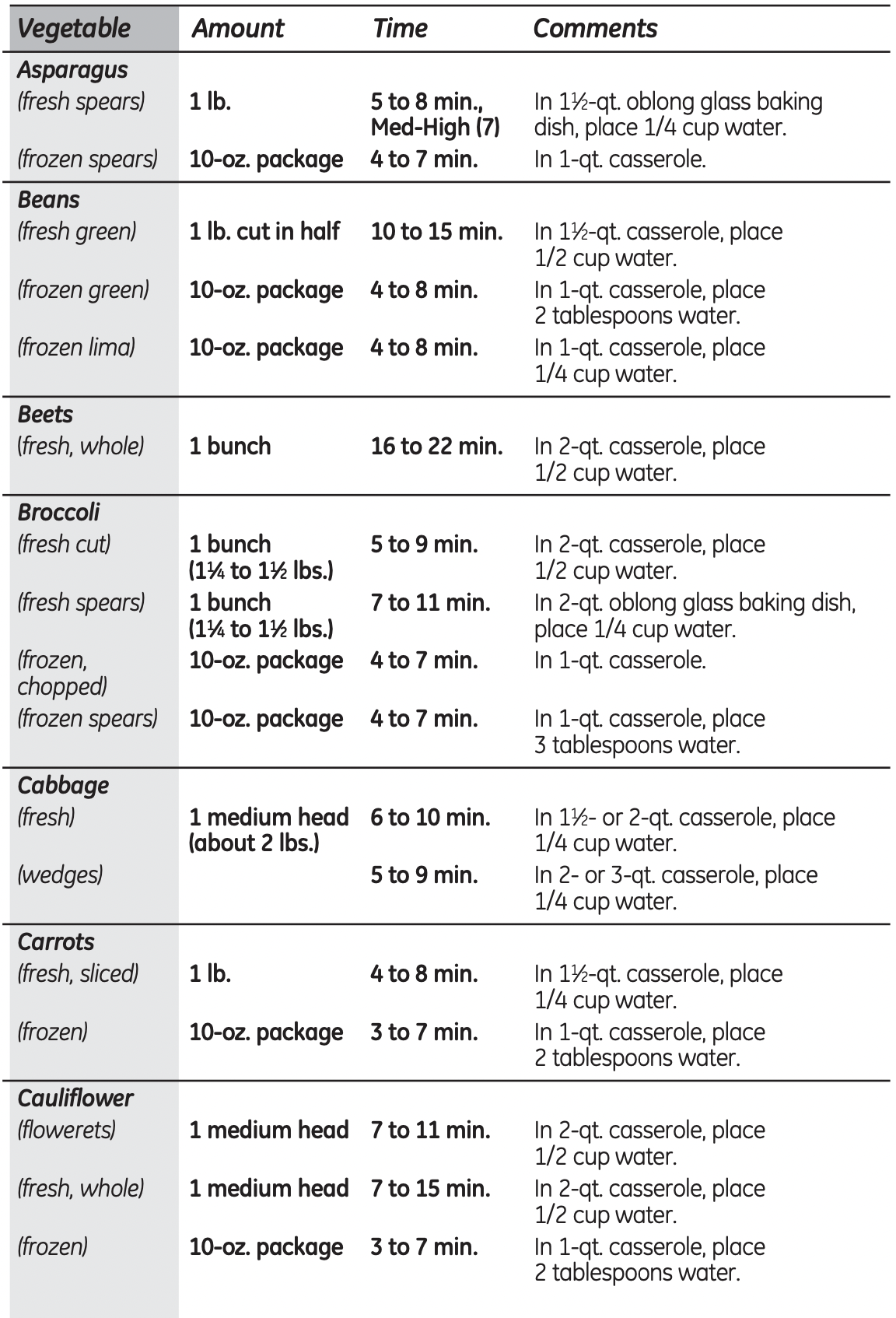

Time Defrost

Allows you to defrost for a selected length of time. See the Defrosting Guide for suggested times. (Weight Defrost explained in the About the Auto Feature section.)
- Press DEFROST TIME/WEIGHT twice.
- Enter defrosting time.
- Press START/PAUSE.
- Turn food over when the oven signals.
- Press START/PAUSE.
Power level is automatically set at 3, and you may not change it.
At one half of selected defrosting time, the oven signals TURN. At this time, turn food over and break apart or rearrange pieces for more even defrosting. Shield any warm areas with small pieces of foil.
A dull thumping noise may be heard during defrosting. This is normal when oven is not operating at High power.
Defrosting Tips
- Foods frozen in paper or plastic can be defrosted in the package. Closed packages should be slit, pierced or vented AFTER food has partially defrosted. Plastic storage containers should be partially uncovered.
- Family-size, prepackaged frozen dinners can be defrosted and microwaved. If the food is in a foil container, transfer it to a microwave-safe dish.
- Foods that spoil easily should not be allowed to sit out for more than one hour after defrosting. Room temperature promotes the growth of harmful bacteria.
- For more even defrosting of larger foods, such as roasts, use Weight Defrost. Be sure large meats are completely defrosted before cooking.
- When defrosted, food should be cool but softened in all areas. If still slightly icy, return to the microwave very briefly, or let it stand a few minutes.
Defrosting Guide
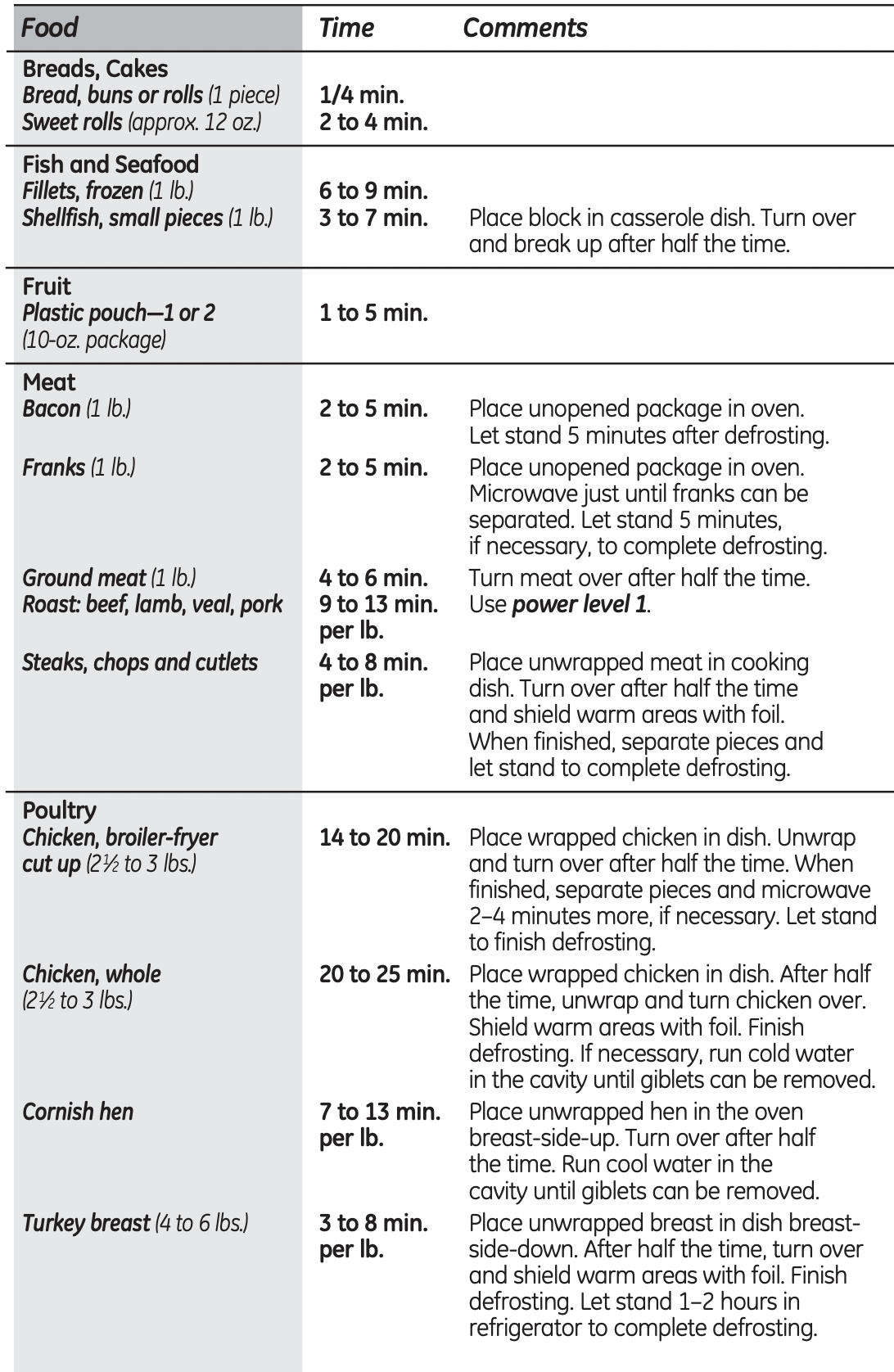
Express Cook
This is a quick way to set cooking time for 1 –6 minutes.
Press one of the Express Cook pads (from 1 to 6) for 1–6 minutes of cooking at power level 10. For example, press the 2 pad for 2 minutes of cooking time.
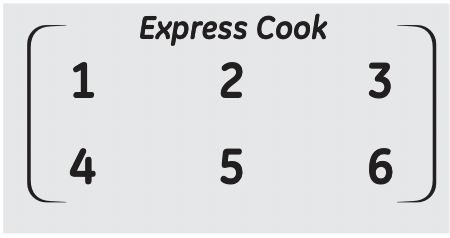
Add 30 Seconds
You can use this feature two ways:
- It will add 30 seconds to the time counting down each time the pad is pressed.
- It can be used as a quick way to set 30 seconds of cooking time.
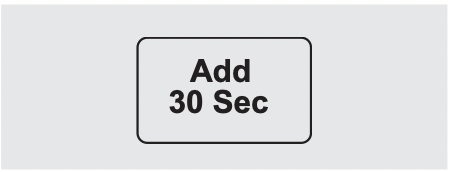
Beverage
Press BEVERAGE to heat a cup of coffee or other beverage.
Drinks heated with the Beverage feature may be very hot. Remove the container with care.
If food is undercooked after the countdown use Time Cook for additional cooking time.
NOTE: Do not use this feature twice in succession on the same food portion - it may result in severely overcooked or burnt food.
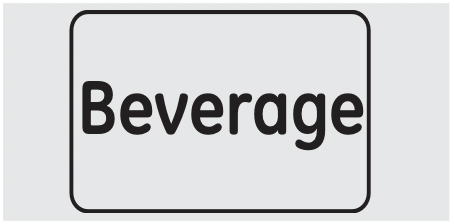
About the auto feature.
WEIGHT DEFROST

The DEFROST TIME/WEIGHT feature gives you two ways to defrost frozen foods. Press DEFROST TIME/WEIGHT once for WEIGHT DEFROST or twice for TIME DEFROST.
Use WEIGHT DEFROST for meat, poultry and fish. Use TIME DEFROST for most other frozen foods.
WEIGHT DEFROST automatically sets the defrosting times and power levels to give even defrosting results for meats, poultry and fish weighing up to 6 pounds.
- Press DEFROST TIME/WEIGHT once.
- Using the Conversion Guide below, enter food weight. For example, press pads 1 and 2 for 1.2 pounds (1 pound, 3 ounces).
- Press START/PAUSE.
(Time Defrost is explained in the About the Time Features section.)
There is a handy guide located on the front of the oven.
- Remove meat from package and place on microwave-safe dish.
- Twice during defrost, the oven signals TURN. At each TURN signal, turn the food over. Remove defrosted meat or shield warm areas with small pieces of foil.
- After defrosting, most meats need to stand 5 minutes to complete defrosting. Large roasts should stand for about 30 minutes.
Conversion Guide
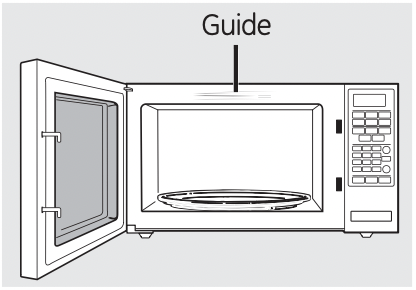
If the weight of food is stated in pounds and ounces, the ounces must be converted to tenths (.1) of a pound.
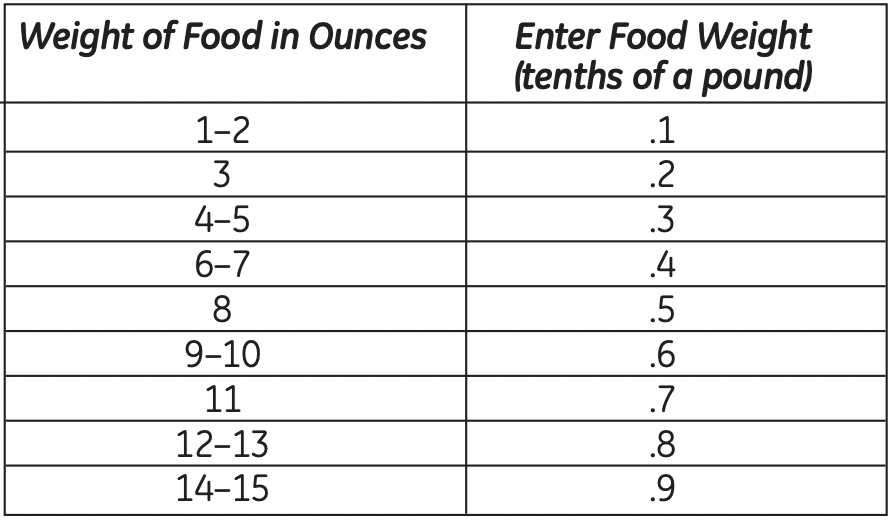
About the sensor features.
Humidity Sensor
The Sensor Features detect the increasing humidity released during cooking. The oven automatically adjusts the cooking time to various types and amounts of food.
Do not use the Sensor Features twice in succession on the same food portion - it may result in severely over-cooked or burnt food. If food is undercooked after the countdown, use Time Cook for additional cooking time.
- The proper containers and covers are essential for best sensor cooking.
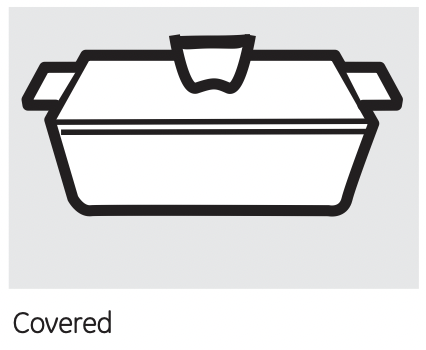
- Always use microwave-safe containers and cover them with lids or vented plastic wrap. Never use tight-sealing plastic containers - they can prevent steam from escaping and cause food to overcook.
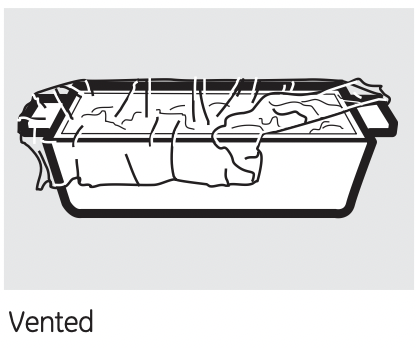
- Be sure the outside of the cooking containers and the inside of the microwave oven are dry before placing food in the oven. Beads of moisture turning into steam can mislead the sensor.
See other models: PEB7226DF2BB ZDP48N6DH1SS PSC23NSWASS JVM6175DK1WW JGB800SEP2SS
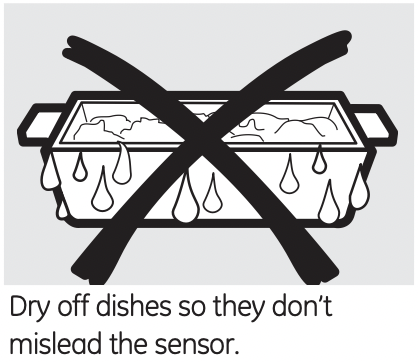
Popcorn

To use the Popcorn feature:
- Follow package instructions, using Time Cook if the package is less than 1.75 ounces or larger than 3.5 ounces. Place the package of popcorn in the center of the microwave.
- Press POPCORN. The oven starts immediately.
Do not open the oven door until time is counting down. If the door is opened, while time is counting down, close it and press START/PAUSE immediately.
If food is undercooked after the countdown use Time Cook for additional cooking time.
Use only with prepackaged microwave popcorn weighing 1.75 to 3.5 ounces.
NOTE: Do not use this feature twice in succession on the same food portion - it may result in severely overcooked or burnt food.
Reheat

The Reheat feature reheats single servings of previously cooked foods or a plate of leftovers.
- Place covered food in the oven. Press REHEAT.
The oven starts immediately. - The oven signals when steam is sensed and the time remaining begins counting down.
Do not open the oven door until time is counting down. If the door is opened, while time is counting down, close it and press START/PAUSE immediately.
After removing food from the oven, stir, if possible, to even out the temperature. Reheated foods may have wide variations in temperature. Some areas may be extremely hot.
If food is not hot enough after the countdown, use Time Cook for additional reheating time.
Some Foods Not Recommended for Use With Reheat
It is best to use Time Cook for these foods:
- Bread products.
- Foods that must be reheated uncovered.
- Foods that need to be stirred or rotated.
- Foods calling for a dry look or crisp surface after reheating.
NOTE: Do not use this feature twice in succession on the same food portion - it may result in severely overcooked or burnt food.
Sensor Cooking
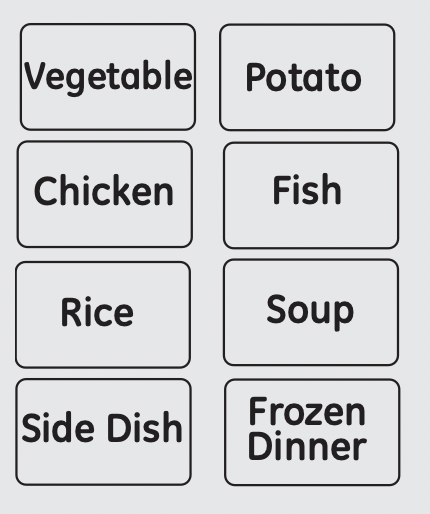
Vegetables, Potatoes, Fish, Chicken Pieces, Soup, Side Dish, Rice, Frozen Dinner
- Place covered food in the oven. Press the food pad. For vegetables, press the VEGETABLE pad. The oven will start immediately.
- The oven signals when steam is sensed and the time remaining begins counting down. Turn or stir the food if necessary.
Do not open the oven door until time is counting down. If the door is opened, while time is counting down, close it and press START/PAUSE immediately.
For pre-wrapped potatoes, please follow cooking instructions on the package.
If food is undercooked after the countdown use Time Cook for additional cooking time.
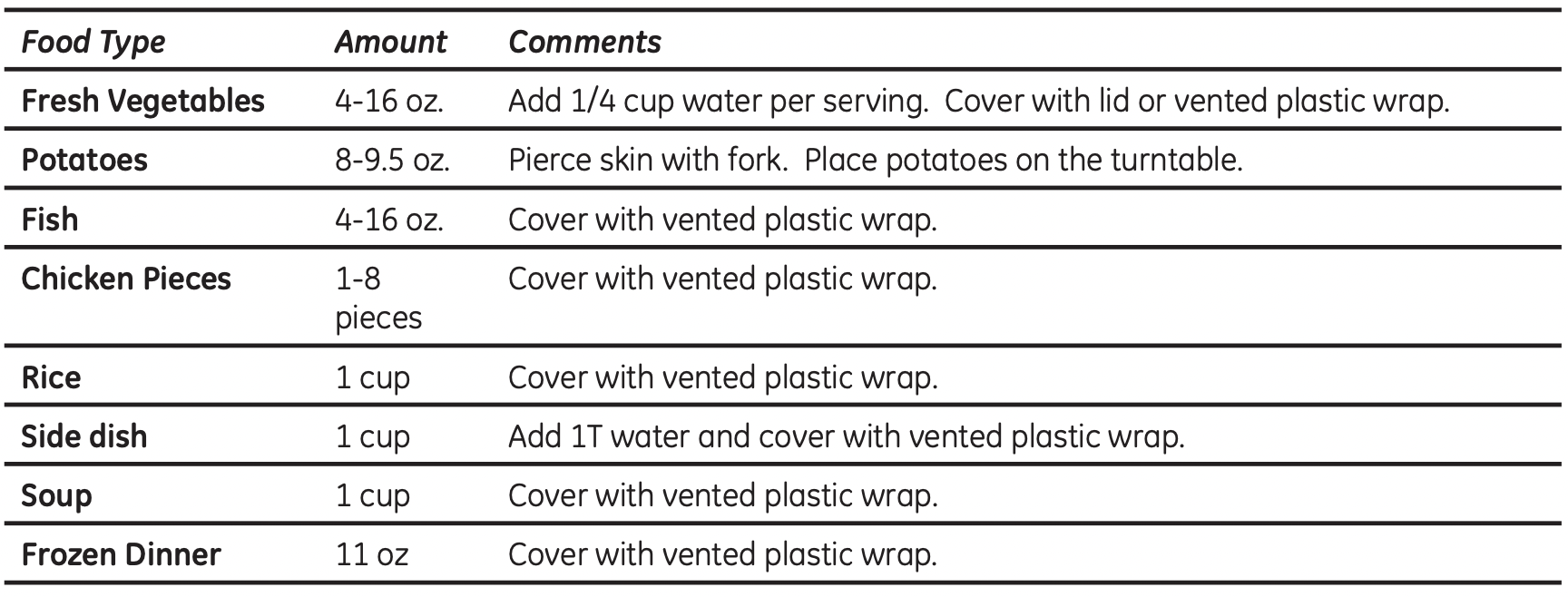
About the other features.
Clock
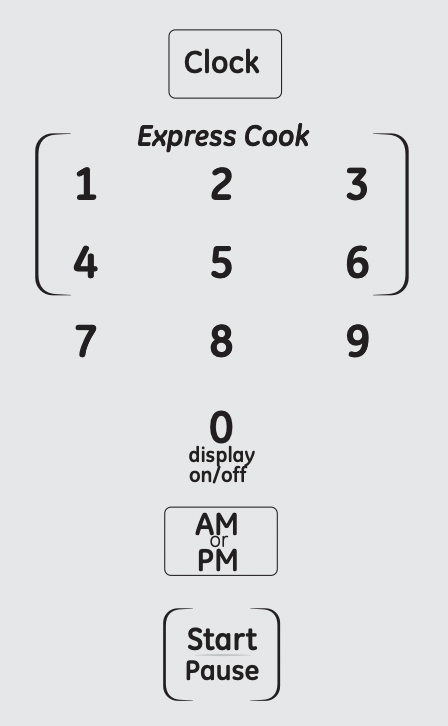
Press to enter the time of day or to check the time of day while microwaving.
- Press CLOCK.
- Enter time of day.
- Select AM or PM.
- Press START/PAUSE or CLOCK.
Start/Pause
In addition to starting many functions, START/PAUSE allows you to stop cooking without opening the door.

Control Lock-Out
You may lock the control panel to prevent the microwave from being accidentally started or used by children.
To lock or unlock the controls, press and hold CANCEL/OFF for about three seconds. When the control panel is locked, LOC will be displayed to the extreme right.

Timer On/Off
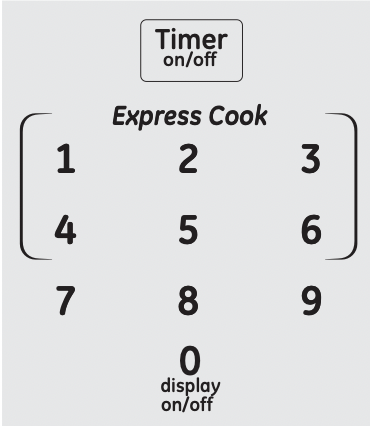
Timer On/Off operates as a minute timer and can be used at any time, even when the oven is operating.
- Press TIMER ON/OFF.
- Enter time you want to count down.
- Press TIMER ON/OFF to start.
When time is up, the oven will signal. To turn off the timer signal, press TIMER ON/OFF.
NOTE: The timer indicator will be lit while the timer is operating.
Display On/Off
To turn the clock display on or off, press and hold 0 for about 3 seconds. The Display On/Off feature cannot be used while a cooking feature is in use.

Microwave terms.
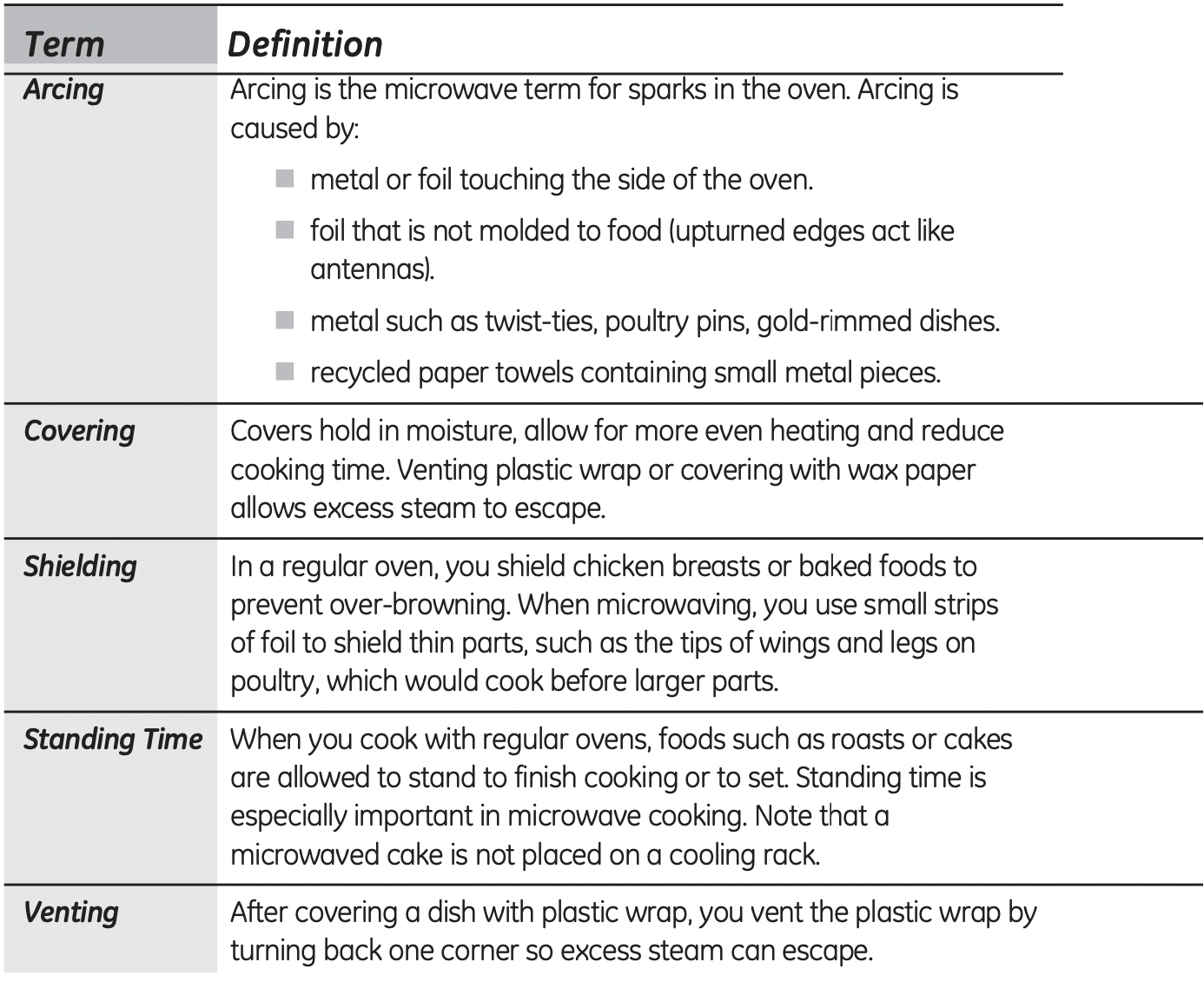
Care and cleaning
Helpful Hints
An occasional thorough wiping with a solution of baking soda and water keeps the inside fresh.
Unplug the cord before cleaning any part of this oven.
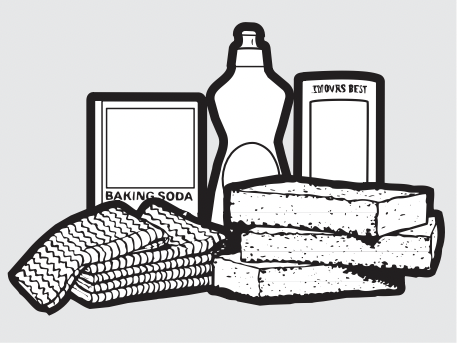
How to Clean the Inside
Walls, Floor, Inside Window, Metal and Plastic Parts on the Door
Some spatters can be removed with a paper towel, others may require a damp cloth. Remove greasy spatters with a sudsy cloth, then rinse with a damp cloth. Do not use abrasive cleaners or sharp utensils on oven walls.
To clean the surface of the door and the surface of the oven that come together upon closing, use only mild, nonabrasive soaps or detergents using a sponge or soft cloth. Rinse with a damp cloth and dry.
Never use a commercial oven cleaner on any part of your microwave.

Removable Turntable and Turntable Support
To prevent breakage, do not place the turntable into water just after cooking. Wash it carefully in warm, sudsy water or in the dishwasher. The turntable and support can be broken if dropped. Remember, do not operate the oven without the turntable and support in place.
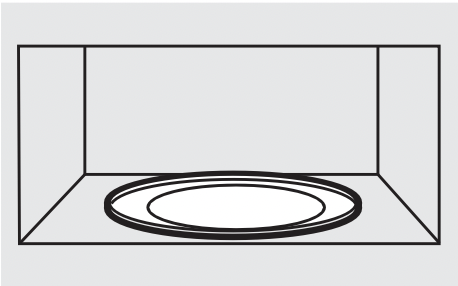
How to Clean the Outside
Do not use cleaners containing ammonia or alcohol on the microwave oven. Ammonia or alcohol can damage the appearance of the microwave.
Case
Clean the outside of the microwave with a sudsy cloth. Rinse and then dry. Wipe the window clean with a damp cloth.
Control Panel and Door
Wipe with a damp cloth. Dry throughly. Do not use cleaning sprays, large amounts of soap and water, abrasives or sharp objects on the panel - they can damage it. Some paper towels can also scratch the control panel.
Door Surface
It's important to keep the area clean where the door seals against the microwave. Use only mild, non-abrasive detergents applied with a clean sponge or soft cloth. Rinse well.
Stainless Steel
Do not use a steel-wool pad, it will scratch the surface.
To clean the stainless steel surface, use a hot, damp cloth with a mild detergent suitable for stainless steel surfaces. Use a clean, hot, damp cloth to remove soap. Dry with dry, clean cloth. Always scrub lightly in the direction of the grain.
Power Cord
If the power cord becomes soiled, unplug and wash with a damp cloth. For stubborn spots, sudsy water may be used, but be certain to rinse with a damp cloth and ddry thoroughly before plugging cord into outlet.
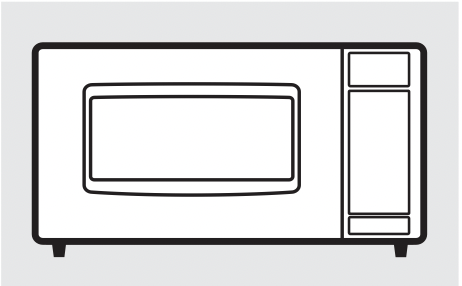
TROUBLESHOOTING
| Problem | Possible Causes |
What To Do |
|---|---|---|
| Oven will not start |
A fuse in your home may be blown or the circuit breaker tripped. |
Replace fuse or reset circuit breaker. |
| Power surge. |
Unplug the microwave oven, then plug it back in. |
|
| Plug not fully inserted into wall outlet. |
Make sure the 3-prong plug on the oven is fully inserted into wall outlet. |
|
| Door not securely closed. |
Open the door and close securely. |
|
| Control panel lighted, yet oven will not start | Door not securely closed. |
Open the door and close securely. |
|
START/PAUSE pad not pressed after entering cooking selection. |
Press START/PAUSE. |
|
|
Another selection entered already in oven and CANCEL/OFF pad not pressed to cancel it. |
Press CANCEL/OFF. |
|
|
Cooking time not entered after pressing TIME COOK. |
Make sure you have entered cooking time after pressing TIME COOK. |
|
| CANCEL/OFF was pressed accidentally. |
Reset cooking program and press START/PAUSE. |
|
|
Food weight not entered after selecting WEIGHT DEFROST. |
Make sure you have entered food weight after selecting WEIGHT DEFROST. |
|
| “SENSOR ERROR” (or Err) appears on display |
During Popcorn, Potato, Vegatable, Rice, Soup, Frozen Dinner, Side Dish, Chicken, or Fish program, the door was opened before steam could be detected. |
Close the door, press CANCEL/OFF and begin again. |
|
Steam was not detected in maximum amount of time. |
Use Time Cook to heat for more time. |
|
|
“LOCKED” (or LOC) appears in display |
The control has been locked. |
Press and hold CANCEL/ OFF or about three seconds to unlock the control. |
|
Food amount too large for Sensor Reheat |
Sensor Reheat is for single servings of recommended foods. |
Use Time Cook for large amounts of food. |
| “FOOD (or food)” appears on display |
For safe cooking “food detection algorithm” is added to prevent microwave cooking without first placing food into the cavity. Through monitor the door open/close switch, Food Detection Algorithm control the initiating a cooking sequence. |
You should open the door to check the food. (For users who place food into the cavity before selecting a cooking sequence, the door switch is read to determine the door has been opened and then closed. Upon opening and the door, a 5-minute count down timer is started. You can then make your cooking selection prior to the expiration of the timer. When 5-timer expires, if you elect a cooking sequence, ''FOOD" will appear on the display and an error beep will sound. Then you should open the door to check the food before selecting a cooking sequence.) |
Things That Are Normal With Your Microwave Oven
- Steam or vapor escaping from around the door.
- Light reflection around door or outer case.
- Dimming oven light and change in the blower sound at power levels other than high.
- Dull thumping sound while oven is operating.
- TV/radio interference might be noticed while using the microwave. Similar to the interference caused by other small appliances, it does not indicate a problem with the microwave. Plug the microwave into a different electrical circuit, move the radio or TV as far away from the microwave as possible, or check the position and signal of the TV/radio antenna.
